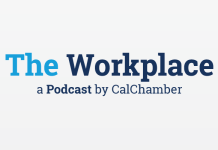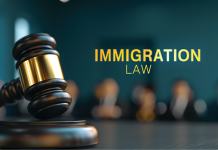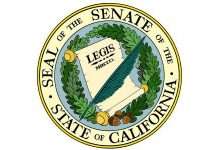Every January, California Chamber of Commerce employment law experts travel up and down the state educating California employers about new employment laws affecting the workplace.
The CalChamber Employment Law Updates seminars provide an opportunity for employers to learn about new workplace requirements and share questions or challenges they’ve experienced complying with existing laws or understanding new laws.
Top Subject
Over a one-month span, CalChamber experts conducted nine seminars, speaking with hundreds of employers throughout the state. One topic that dominated every seminar was questions surrounding California’s mandatory paid sick leave law, which took effect last year and required employers to provide paid sick leave (PSL) to their employees beginning July 1, 2015.
With the July 1, 2015 date on the horizon, most employers spent the beginning half of last year focused on making sure they had in place a sick leave or paid time off (PTO) policy that provided time off to their employees. Employers were either creating new and compliant policies or examining existing ones to ensure no changes were required.
Today, employers are looking back at their policies, wondering whether those policies are best suited for their workplace. More important, many employers are realizing that the law requires much more than simply providing days off to an employee.
As a result, some employers are contemplating adding another paid sick leave policy as a means of not only complying with the new law, but also allowing the employer to continue providing more than the minimum amount of sick leave time, but without the additional strings and restrictions that come with California’s sick leave law.
The paid sick leave questions asked at the CalChamber seminars often were related to misconceptions or misunderstandings about the law’s minimum requirements and how the law’s protections apply to more generous sick leave and PTO policies, as well as how to control misuse of paid sick leave.
More specifically, employers wanted to know: at what point can an employer ask for a doctor’s note as a condition of taking or returning from paid sick leave?
Because we received so many questions about policies in place or newly created policies, below are a few key points to highlight as employers continue to comply with the law.
Key Question
Does the mandatory sick leave law apply to the entire sick leave or PTO policy—even to time that exceeds the statutory minimums?
California’s paid sick leave law provides minimum requirements that employers may either follow to the letter of the law or expand upon—an example being a policy that allows an employee to use and accrue more than the statutory minimum.
Whether an employer wants to offer only the minimum amount or wishes to offer more, the entire paid sick leave or PTO policy must comply with all aspects of the law.
- The law does not automatically limit employee use to three days or 24 hours and cap accrual at 48 hours in a given year. The employer must establish these limitations by policy.
Absent a cap on accrual and limit on use, an employee will accrue either at the statutory rate of 1 hour for 30 hours worked or at a more generous rate and may use the time as accrued—even beyond three days or 24 hours.
Some employers had policies that limited use and capped accrual at five days or 40 hours. Although the limit on use exceeded the statutory minimum, the cap on accrual did not, and the employer’s policy was not in compliance with the law
2. Recordkeeping requirements apply to all time contained in a sick leave plan. The law requires employers to keep records documenting the hours worked and the paid sick days accrued and used by the employee for at least three years. This requirement applies to all sick leave time provided—including time that is beyond the statutory minimum if the plan goes beyond the statute’s minimum requirements.
3. California’s paid sick leave law also specifies when and how an employee is paid for taking a “sick day.” The “sick day” must be paid no later than the payday of the next regular payroll period after the sick leave was taken. The method of calculating the pay depends upon whether the employee is exempt or nonexempt.
For an exempt employee, paid sick time is calculated in the same manner as wages are calculated for other forms of paid leave time.
For nonexempt employees, paid sick leave is calculated either in the same manner as the “regular rate of pay” for the workweek in which the employee uses paid sick time or by “dividing the employee’s total wages, not including overtime premium pay, by the employee’s total hours worked in the full pay period of the prior 90 days of employment.”
Employers should take notice that paying a nonexempt employee for a sick day involves either calculating the employee’s “regular rate of pay” or performing a 90-day look back. These two methods are not the same as the employee’s “base rate.”
Accordingly, employees taking a “sick day” may receive more in pay for being sick than they would receive for being out on vacation for a day. Moreover, the method of calculating pay applies to all sick time in a compliant sick leave or PTO policy.
Again, if your plan provides more time than the statutory minimum, then there will be more days within which this “sick pay” calculation will apply.
Doctor’s Note
When can we ask an employee to provide us with a doctor’s note for taking a sick day?
If there was one paid sick leave question that dominated, it was about requiring a doctor’s note as a condition of either taking a paid sick day or returning from one. Many employers maintained policies that required doctor’s notes after three days of unexcused absences. Once sick leave became mandatory, many employers still tried to enforce those policies for a variety of reasons, one being to ensure employees weren’t “faking it” and otherwise taking advantage of a new paid leave.
Unless a medical certification is required pursuant to another leave law, no provision in the paid sick leave law specifically allows (or prohibits) an employer to ask for a doctor’s note as a condition of taking or returning from being sick. Instead, the law states that an employee must be able to take a sick day when a verbal or written request for the time off is communicated to the employer.
If the need for leave is foreseeable, the employee must provide reasonable advance notice. If the need is not foreseeable, then notice must be provided as “soon as practicable.”
Labor Code Section 247.5 also provides that an employer is not obliged to inquire into or record the purposes for which an employee uses sick leave.
In addition, an employer is prohibited from denying an employee the right to use accrued sick days. The employer also is prohibited from discharging or threatening to discharge, demote, suspend, or in any manner discriminate against an employee for using or attempting to use accrued sick days.
The Labor Commissioner’s office has stated in seminars and other outlets that requiring a doctor’s note may run afoul of the law’s protections against interfering with or otherwise discriminating against an employee seeking to use a sick day. Moreover, an employer who denies leave because an employee failed to provide details about the leave can end up facing a claim for violating the PSL law.
So when is it safe to ask for a doctor’s note? That depends upon the length of your sick leave policy and whether the employee has exhausted protected leave.
For example, if your paid sick leave policy uses an accrual method that also limits use to 24 hours or three days a year, then requiring a doctor’s note after the 24 hours or three days is used may be permissible since there is no more protected time. On the other hand, if you did not limit use to 24 hours or three days, you may run into trouble if you ask for a doctor’s note since the entire amount of the employee’s accrued paid sick leave is protected.
The key question is whether the employee is using time that is protected by the paid sick leave law. Whether a doctor’s note is permissible will depend upon whether the employee used protected time for the missed day of work and whether any protected time is left in the sick leave or PTO bank. This, of course, is the Labor Commissioner’s opinion. While she has the authority to enforce the law, she does not have the authority to create it. Therefore, employers who wish to maintain a policy requiring a doctor’s note after a specified number of sick days should consult with legal counsel.
Two Policies
Is it possible to offer two policies—one that is compliant with the sick leave law and the other that is not?
Many employers are looking at their policies wondering whether to change existing ones or even to carve out a separate PSL policy.
For those seeking to change an existing sick leave or PTO policy, make sure your changed policy still complies with the law’s requirements on accrual and use.
For those employers offering “richer” or more generous paid sick leave or PTO policies, creating or adding a separate “Healthy Workplaces, Healthy Families Act” policy may be the ticket to managing all the requirements and protections that go along with the new law.
In other words, an employer may offer the following: 1) PTO and 2) Healthy Workplaces, Healthy Families Act sick leave policy.
The existing PTO would operate separately and apart from the requirements of the Healthy Workplaces, Healthy Families Act sick leave policy.
Similarly, an employer could establish two sick leave policies, one of which is compliant with the law and the other which is simply a bank of time an employee may use if they are sick. Finally, employers should remember that the Healthy Workplaces, Healthy Families Act sick leave policy can either be a lump-sum policy or accrual base. For many employers, the lump-sum method may prove to be the most easy to provide and administer.
More Information
Employers continuing to grapple with the paid sick leave law can find help atHRCalifornia or contact the Labor Law Helpline, a service for CalChamber preferred and executive members.
Staff Contact: Erika Frank


